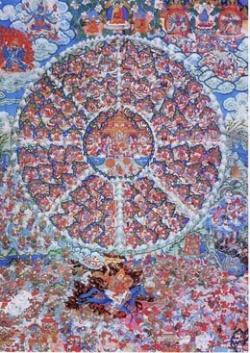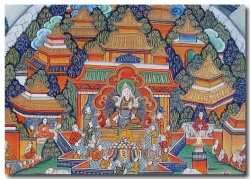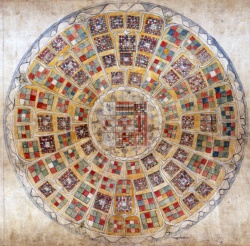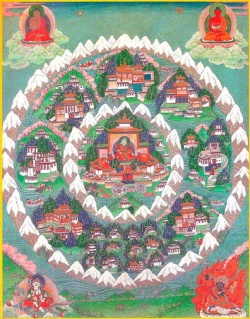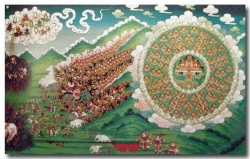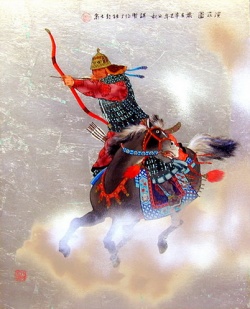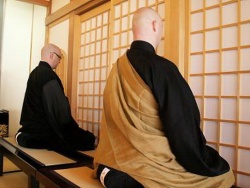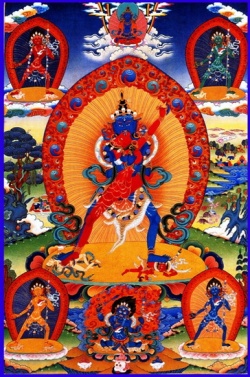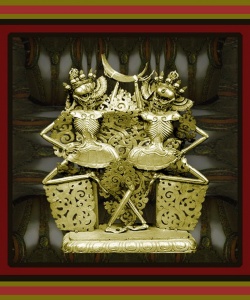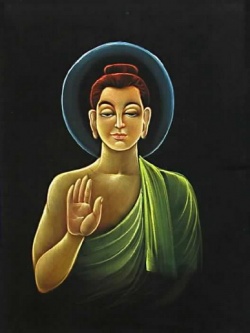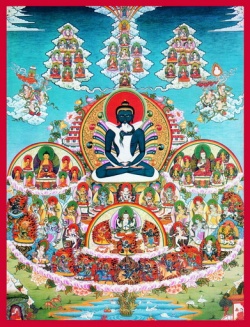Difference between revisions of "D.K., Kalachakra, and Shambhala"
| (3 intermediate revisions by 2 users not shown) | |||
| Line 1: | Line 1: | ||
[[File:56033.jpg|thumb|250px|]][[File:8fhhhj.jpg|thumb|250px|]][[File:Sam mapb.jpg|thumb|250px|]][[File:Sh788623hala.jpg|thumb|250px|]][[Category:Shambhala jjh.jpg]][[File:Shambhala.0.jpg|thumb|250px|]][[File:Tsax16.jpg|thumb|250px|]]{{DisplayImages|1430|634|1588|1690|1542|503}} | [[File:56033.jpg|thumb|250px|]][[File:8fhhhj.jpg|thumb|250px|]][[File:Sam mapb.jpg|thumb|250px|]][[File:Sh788623hala.jpg|thumb|250px|]][[Category:Shambhala jjh.jpg]][[File:Shambhala.0.jpg|thumb|250px|]][[File:Tsax16.jpg|thumb|250px|]]{{DisplayImages|1430|634|1588|1690|1542|503}} | ||
<poem> | <poem> | ||
| − | |||
| − | |||
| − | |||
| − | |||
| − | |||
| − | In an {{Wiki|ancient}} commentary on the secret “[[Book of Dzyan]],” quoted by {{Wiki|H. P. Blavatsky}} in The Secret [[Doctrine]], {{Wiki|planet}} [[earth]] is likened to a living [[body]]. The commentary speaks of the [[water]] of [[life]] that flows around and animates mother earth’s [[body]], saying: “It gets [[purified]] (on its return) to her heart—which beats under the foot of the [[sacred]] | + | |
| + | |||
| + | Of all the teachings given by the [[Tibetan]] [[Master]] D.K. to the [[world]] through his amanuensis, {{Wiki|Alice Bailey}}, he regarded the [[teaching]] on [[Shambhala]] to be the most important.1 Yet this [[teaching]] [[forms]] only a small part of what he gave us. Why did he put this ahead of his much more extensive teachings, including the [[teaching]] on the seven rays given in five large volumes? [[Shambhala]], we know, is a very [[sacred]] place. But | ||
| + | |||
| + | why would D.K. regard the [[teaching]] on [[Shambhala]] to be so important? [[Shambhala]] is not on the map. It is not described in our {{Wiki|geography}} [[books]]. In the great [[Kalachakra]] commentary titled [[Vimala-prabha]], “[[Stainless Light]],” we find [[Shambhala]] described. | ||
| + | |||
| + | From this description, {{Wiki|artists}} in [[Tibet]] painted pictures of [[Shambhala]]. These paintings, or [[tangkas]], follow the description given in the text very closely. The {{Wiki|artists}} are not free to use their [[imaginations]] and draw just anything they [[feel]] inspired to draw. The text | ||
| + | |||
| + | describes [[Shambhala]] as a large {{Wiki|kingdom}} having eight divisions. All the [[tangka]] paintings of [[Shambhala]] show these eight [[sections]]. Since we cannot see the {{Wiki|kingdom}} of [[Shambhala]], we do not know if its eight divisions are to be taken literally as {{Wiki|geography}}, or [[symbolically]]. | ||
| + | |||
| + | We cannot see [[Shambhala]] with our [[physical]] [[eyes]], any more than we can see the [[chakras]] or [[energy]] centers that are described in [[Sanskrit]] [[books]] as being located in our [[subtle bodies]]. These, too, like [[Shambhala]], have been depicted by {{Wiki|artists}} in paintings based on descriptions of them. Paintings of the [[chakras]] were published in Arthur Avalon’s 1918 [[book]], The [[Serpent Power]], made from the descriptions | ||
| + | |||
| + | given in the [[Shat-chakra-nirupana]]. The [[chakras]] are depicted as [[lotus]] [[flowers]], with varying numbers of petals. These [[chakras]] have become quite familiar to students of the [[esoteric teachings]]. If we look at the painting showing a [[lotus]] having twelve petals, students will immediately [[recognize]] this as a depiction of the [[heart chakra]]. | ||
| + | |||
| + | It is well known that the [[heart chakra]] has twelve petals. The [[heart chakra]] is described not only in such [[Hindu]] [[tantric]] texts as the [[Shat-chakra-nirupana]], but also in C. W. Leadbeater’s widely read [[book]], The [[Chakras]], and again in the {{Wiki|Alice Bailey}} writings, as having twelve petals. If we look carefully at the picture of the [[heart chakra]] from The [[Serpent Power]], we notice a small [[chakra]] at the bottom of the painting. | ||
| + | |||
| + | According to the [[Sanskrit]] commentary it is located below the central hub of the [[heart]] lotus,3 and it is necessarily painted there, but two verses quoted in the commentary place it inside the [[heart]] lotus.4 As we see, it has eight petals. | ||
| + | |||
| + | Yes, eight, just like the eight divisions of [[Shambhala]] we saw. The paintings accurately follow the texts, and the connection they allow us to make is clear, the connection between [[Shambhala]] and the [[eight-petalled lotus]] within the [[heart chakra]]. In fact, the [[heart chakra]] is described in the [[Buddhist]] [[tantric]] texts as having eight petals, not twelve petals. Not only [[Buddhist]] [[tantric]] texts, but also [[Jaina]] texts and some other | ||
| + | |||
| + | {{Wiki|Hindu texts}} describe the [[heart chakra]] as having eight petals.5 So the implication is also clear: [[Shambhala]], with its eight divisions, is intended to represent the [[heart]] chakra.6 [[Shambhala]] is a [[sacred]] place because, in some [[sense]], it represents the [[heart]] of our {{Wiki|planet}}. | ||
| + | |||
| + | In an {{Wiki|ancient}} commentary on the secret “[[Book of Dzyan]],” quoted by {{Wiki|H. P. Blavatsky}} in The Secret [[Doctrine]], {{Wiki|planet}} [[earth]] is likened to a living [[body]]. The commentary speaks of the [[water]] of [[life]] that flows around and animates mother earth’s [[body]], saying: “It gets [[purified]] (on its return) to her heart—which beats under the foot of the [[sacred]] [[Shambala]].”7 This beautiful quotation, with its | ||
| + | |||
| + | metaphoric [[language]], is worth quoting more fully: “In the first beginnings of ([[human]]) [[life]], the only dry land was on the Right end [the {{Wiki|north pole}}] of the [[sphere]], where it (the {{Wiki|globe}}) is motionless. The whole [[earth]] was one vast watery desert, and the waters were tepid . . . . There man was born on the seven zones of the [[immortal]], the [[indestructible]] of the [[Manvantara]]. There was [[eternal]] spring in darkness. (But) that which is darkness to the man of today, was light to the man of his dawn. There, the [[gods]] rested, and Fohat reigns ever since . . . | ||
Thus the [[wise]] fathers say that man is born in the head of his mother ([[earth]]), and that her feet at the left end generated (begot) the [[evil]] [[winds]] that blow from the {{Wiki|mouth}} of the lower [[Dragon]] . . . . Between the first and second (races) the [[eternal]] central (land) was divided by the [[water]] of [[life]]. [HPB adds a note here: This “[[water]]” is the {{Wiki|blood}} or fluid of [[life]] which animates the [[earth]], compared here to a living [[body]]. | Thus the [[wise]] fathers say that man is born in the head of his mother ([[earth]]), and that her feet at the left end generated (begot) the [[evil]] [[winds]] that blow from the {{Wiki|mouth}} of the lower [[Dragon]] . . . . Between the first and second (races) the [[eternal]] central (land) was divided by the [[water]] of [[life]]. [HPB adds a note here: This “[[water]]” is the {{Wiki|blood}} or fluid of [[life]] which animates the [[earth]], compared here to a living [[body]]. | ||
| − | “It flows around and animates her (mother earth’s) [[body]]. Its one end issues from her head; it becomes foul at her feet (the Southern Pole). It gets [[purified]] (on its return) to her [[heart]]— which beats under the foot of the [[sacred]] [[Shambalah]], which then (in the beginnings) was not yet born. . . .”8 The [[Tibetan]] [[Master]] D.K., in some of the new [[information]] on [[Shambhala]] that he gave out, tells us of the coming of the {{Wiki|Hierarchy}} and the founding of [[Shambhala]] “about eighteen and a half million years ago.”9 The {{Wiki|movement}} for the spreading of the Secret [[Doctrine]], he says, is that old. He speaks briefly of the Hierarchy’s first organization of the teachings of the {{Wiki|mysteries}} on the [[physical]] plane, and “the first outpost of the [[Shamballa]] Fraternity.” | + | “It flows around and animates her (mother earth’s) [[body]]. Its one end issues from her head; it becomes foul at her feet (the Southern Pole). It gets [[purified]] (on its return) to her [[heart]]— which beats under the foot of the [[sacred]] [[Shambalah]], which then (in the beginnings) was not yet born. |
| + | |||
| + | . . .”8 The [[Tibetan]] [[Master]] D.K., in some of the new [[information]] on [[Shambhala]] that he gave out, tells us of the coming of the {{Wiki|Hierarchy}} and the founding of [[Shambhala]] “about eighteen and a half million years ago.”9 The {{Wiki|movement}} for the spreading of the Secret [[Doctrine]], he says, is that old. He speaks briefly of the Hierarchy’s first organization of the teachings of the {{Wiki|mysteries}} on the [[physical]] plane, and “the first outpost of the [[Shamballa]] Fraternity.” | ||
He goes on to point out some of the changes that these teachings have gone through over the ages, in response to the changing needs of developing [[humanity]]. He describes the [[gradual]] development of the teachings and their culmination in the {{Wiki|mystery}} schools of antiquity: | He goes on to point out some of the changes that these teachings have gone through over the ages, in response to the changing needs of developing [[humanity]]. He describes the [[gradual]] development of the teachings and their culmination in the {{Wiki|mystery}} schools of antiquity: | ||
| Line 22: | Line 43: | ||
All these teachings and all these {{Wiki|mystery}} schools, D.K. tells us, were inspired by and originated from [[Shambhala]]. | All these teachings and all these {{Wiki|mystery}} schools, D.K. tells us, were inspired by and originated from [[Shambhala]]. | ||
| − | But what is the [[teaching]] of [[Shambhala]] itself? How is the [[teaching]] that would lie behind the teachings of all these {{Wiki|mystery}} schools formulated there? The [[teaching]] of [[Shambhala]] is known as [[Kalachakra]]. It was brought out by an [[Indian]] [[yogi]] who undertook a journey there more than a thousand years ago. Without ever reaching there, he was met partway by a [[teacher]] who gave him the texts. He was able to bring back the [[Kalachakra Tantra]], abridged by [[King]] [[Manjushri-Yashas]] of [[Shambhala]] from the full [[Kalachakra Tantra]] written down by [[King Suchandra]]. He also brought back the [[Vimala-prabha]] or [[Stainless Light]] commentary thereon, abridged by [[King]] [[Pundarika]] of [[Shambhala]]. It is from this text that we learn how [[Kalachakra]] became the state [[religion]] of [[Shambhala]]. | + | But what is the [[teaching]] of [[Shambhala]] itself? How is the [[teaching]] that would lie behind the teachings of all these {{Wiki|mystery}} schools formulated there? The [[teaching]] of [[Shambhala]] is known as [[Kalachakra]]. It was brought out by an [[Indian]] [[yogi]] who undertook a journey there |
| + | |||
| + | more than a thousand years ago. Without ever reaching there, he was met partway by a [[teacher]] who gave him the texts. He was able to bring back the [[Kalachakra Tantra]], abridged by [[King]] [[Manjushri-Yashas]] of [[Shambhala]] from the full [[Kalachakra Tantra]] written down by [[King Suchandra]]. He also brought back the [[Vimala-prabha]] or [[Stainless Light]] commentary thereon, abridged by [[King]] [[Pundarika]] of [[Shambhala]]. It is from this text that we learn how [[Kalachakra]] became the state [[religion]] of [[Shambhala]]. | ||
| + | |||
| + | The [[Stainless Light]] commentary on the [[Kalachakra Tantra]] describes, in an entertaining story, how the thirty-five million {{Wiki|Vedic}} [[sages]] of [[Shambhala]] took up the practice of [[Kalachakra]]. Suffice it to say that they did so, and [[Kalachakra]] then became the state [[religion]] of [[Shambhala]]. They received the [[Kalachakra initiation]] from [[King]] [[Manjushri-Yashas]] at [[Kalapa]], the [[capital of Shambhala]], after first | ||
| − | + | receiving the [[Kalachakra]] [[teaching]]. What is the [[Kalachakra]] [[teaching]]? Most central to it is the correspondence between the [[macrocosm]] and the [[microcosm]], and the correspondence between these and an {{Wiki|ideal}} {{Wiki|archetype}}. This {{Wiki|ideal}} {{Wiki|archetype}} is the [[Kalachakra mandala]], a cosmogram or [[cosmic]] blueprint. | |
| − | In the [[West]], the correspondence between the [[macrocosm]] and the [[microcosm]] has been [[recognized]] and expressed in the often-quoted {{Wiki|axiom}} from the {{Wiki|Emerald}} Tablet attributed to {{Wiki|Hermes}}, “as above, so below.” In [[Kalachakra]], we have what lies behind this observed correspondence, showing the [[reason]] for it: There is an {{Wiki|archetypal}} pattern behind both the [[macrocosm]] and the [[microcosm]]. These three are expressed in [[Kalachakra]] as “outer,” “inner,” and “other,” where “other” refers to the [[Kalachakra mandala]] as [[embodying]] this {{Wiki|archetypal}} pattern. Like the {{Wiki|Emerald}} Tablet’s {{Wiki|axiom}}, [[Kalachakra]], too, has a famous {{Wiki|axiom}} [[teaching]] this: | + | In the [[West]], the correspondence between the [[macrocosm]] and the [[microcosm]] has been [[recognized]] and expressed in the often-quoted {{Wiki|axiom}} from the {{Wiki|Emerald}} Tablet attributed to {{Wiki|Hermes}}, “as above, so below.” In [[Kalachakra]], we have what lies behind this |
| + | |||
| + | observed correspondence, showing the [[reason]] for it: There is an {{Wiki|archetypal}} pattern behind both the [[macrocosm]] and the [[microcosm]]. These three are expressed in [[Kalachakra]] as “outer,” “inner,” and “other,” where “other” refers to the [[Kalachakra mandala]] as [[embodying]] this {{Wiki|archetypal}} pattern. Like the {{Wiki|Emerald}} Tablet’s {{Wiki|axiom}}, [[Kalachakra]], too, has a famous {{Wiki|axiom}} [[teaching]] this: | ||
As in the outer, so in the [[body]]; as in the [[body]], so in the other. | As in the outer, so in the [[body]]; as in the [[body]], so in the other. | ||
| − | The [[word]] “[[body]]” is used here for the “inner,” because it is the inner or [[subtle body]] that [[forms]] the correspondences in the [[Kalachakra]] system. The inner or [[subtle body]] consists of [[chakras]] or [[energy]] centers, [[nadis]] or [[energy]] channels, [[pranas]] or [[vital]] airs, which are the [[energy winds]] that flow through the channels, and [[bindus]] or drops, which are also found in the channels. As this might indicate, the [[Kalachakra]] [[teaching]] is a very detailed and complex system. The intricate correspondences between the outer, the inner, and the other are represented in [[symbolic]] [[form]] in the {{Wiki|archetypal}} pattern of the [[Kalachakra mandala]]. The [[Kalachakra]] [[meditation]] practice, or [[sadhana]], consists of [[visualization]] of the [[Kalachakra mandala]] in all its detail. When the correspondences are correctly known and the [[visualization]] is correctly done, the result is the [[purification]] of the outer and inner [[worlds]]. This is made possible through alignment with the {{Wiki|archetypal}} pattern of the [[Kalachakra mandala]]. | + | The [[word]] “[[body]]” is used here for the “inner,” because it is the inner or [[subtle body]] that [[forms]] the correspondences in the [[Kalachakra]] system. The inner or [[subtle body]] consists of [[chakras]] or [[energy]] centers, [[nadis]] or [[energy]] channels, [[pranas]] or [[vital]] airs, which are the [[energy winds]] that flow through the [[channels]], and [[bindus]] or [[drops]], which are also found in the [[channels]]. As this might indicate, |
| + | |||
| + | the [[Kalachakra]] [[teaching]] is a very detailed and complex system. The intricate correspondences between the outer, the inner, and the other are represented in [[symbolic]] [[form]] in the {{Wiki|archetypal}} pattern of the [[Kalachakra mandala]]. The [[Kalachakra]] [[meditation]] practice, or | ||
| + | |||
| + | [[sadhana]], consists of [[visualization]] of the [[Kalachakra mandala]] in all its detail. When the correspondences are correctly known and the [[visualization]] is correctly done, the result is the [[purification]] of the outer and inner [[worlds]]. This is made possible through alignment with the {{Wiki|archetypal}} pattern of the [[Kalachakra mandala]]. | ||
| + | |||
| + | The “outer,” the [[cosmos]], and the “inner,” the [[subtle bodies]] of [[human beings]], together [[form]] what is called “the basis to be [[purified]].” The [[Kalachakra]] [[meditation]] practice or [[visualization]] of the “other,” the [[Kalachakra mandala]], is called “that which purifies.” It is the | ||
| + | |||
| + | [[visualization]] of the [[Kalachakra mandala]] in [[meditation]], thereby causing alignment with the {{Wiki|ideal}} pattern, that brings about the [[purification]] of the outer and inner [[worlds]]. | ||
| − | The | + | The [[Kalachakra mandala]] consists of three parts, known as the [[body]] [[mandala]], the [[speech]] [[mandala]], and the [[mind]] [[mandala]]. These are pictorially represented from outermost to innermost. It is through full [[knowledge]] of this threefold [[mandala]] and its correspondences that a |
| − | + | [[person]] can bring about an alignment between the {{Wiki|ideal}} {{Wiki|archetype}} and the outer and inner [[worlds]]. So the [[Kalachakra]] {{Wiki|axiom}} cited above concludes with a second line: As in the outer, so in the [[body]]; as in the [[body]], so in the other. Having understood the threefold [[mandala]], let the [[teacher]] draw the [[mandala]]. | |
[[King Suchandra]] of [[Shambhala]] did just that, as we learn from the [[Stainless Light]] [[Kalachakra]] commentary. | [[King Suchandra]] of [[Shambhala]] did just that, as we learn from the [[Stainless Light]] [[Kalachakra]] commentary. | ||
| − | We read that to the [[south]] of [[Kalapa]], the [[capital of Shambhala]], is [[Malaya]] Park. It is between two lakes. In the middle of this park, [[King Suchandra]] [[constructed]] an extensive [[Kalachakra]] mandala.15 He made it out of [[jewels]]. It will last a long [[time]]. There it remains, in the center of [[Shambhala]], at the [[heart]] of our {{Wiki|planet}}. It is there that, seven generations later, [[King]] [[Manjushri-Yashas]] gave the [[Kalachakra initiation]] to the {{Wiki|Vedic}} [[sages]] of [[Shambhala]]. This allowed them to undertake the [[Kalachakra]] [[meditation]] practice, or [[sadhana]], and they did so. | + | We read that to the [[south]] of [[Kalapa]], the [[capital of Shambhala]], is [[Malaya]] Park. It is between two lakes. In the middle of this park, [[King Suchandra]] [[constructed]] an extensive [[Kalachakra]] mandala.15 He made it out of [[jewels]]. It will last a long [[time]]. There it remains, in the |
| + | |||
| + | center of [[Shambhala]], at the [[heart]] of our {{Wiki|planet}}. It is there that, seven generations later, [[King]] [[Manjushri-Yashas]] gave the [[Kalachakra initiation]] to the {{Wiki|Vedic}} [[sages]] of [[Shambhala]]. This allowed them to undertake the [[Kalachakra]] [[meditation]] practice, or [[sadhana]], and they did so. | ||
| + | |||
| + | At the [[time]] the [[Tibetan]] [[Master]] D.K. wrote his [[books]] with {{Wiki|Alice Bailey}}, it was entirely impossible to give out the specific [[Kalachakra]] [[meditation]] practice. This practice is full of [[Sanskrit]] [[mantras]] and elaborate [[visualizations]]. D.K. told us that [[mantras]] | ||
| + | |||
| + | |||
| + | “will some day be in common use among the students of [[occult]] meditation,”16 and that “all the new {{Wiki|processes}} in [[meditation]] techniques . . . must and will embody [[visualisation]] as a primary step.”17 But he could not give us the [[mantras]] and [[visualizations]] of the [[Kalachakra]] [[meditation]] practice. This is because [[initiation]] is required in order to undertake this practice. | ||
| − | + | The publicly given [[Kalachakra Initiation]] provides permission to study this system and do its [[meditation]] practice, and also [[protection]] when engaging in this study and practice. It is a powerful practice, and it has therefore long been a secret and protected practice. No one can dispense with the requirement of receiving the [[Kalachakra Initiation]] in order to undertake the [[Kalachakra]] [[meditation]] practice, not even the [[sages]] of | |
| − | + | [[Shambhala]]. What was not possible for D.K. in Alice Bailey’s [[time]] has become possible in our [[time]]. The {{Wiki|present}} [[Dalai Lama’s]] public work in the [[world]] has included [[giving]] the [[Kalachakra Initiation]] a number of times. This Maitreya-like figure, known everywhere for tirelessly [[teaching]] the [[religion]] of [[kindness]], will be [[giving]] the [[Kalachakra Initiation]] at the U.S. capital, {{Wiki|Washington, D.C}}., in early July of this year, 2011. | |
When the [[Kalachakra Initiation]] is given by the [[Dalai Lama]], the [[Kalachakra mandala]] is first prepared ahead of [[time]]. It is carefully drawn by highly [[skilled]] [[monks]] using colored sand. It is hidden behind a curtain throughout the two or three days of D.K., | When the [[Kalachakra Initiation]] is given by the [[Dalai Lama]], the [[Kalachakra mandala]] is first prepared ahead of [[time]]. It is carefully drawn by highly [[skilled]] [[monks]] using colored sand. It is hidden behind a curtain throughout the two or three days of D.K., | ||
| Line 49: | Line 91: | ||
Then at the end, when everyone has been initiated, the curtain is removed and they are allowed to [[view]] the [[Kalachakra mandala]]. It is, at that special [[time]], a very moving [[sight]]. There, in an intricate and beautiful cosmogram, is [[symbolized]] the altogether new [[world]] that they have now been introduced into. | Then at the end, when everyone has been initiated, the curtain is removed and they are allowed to [[view]] the [[Kalachakra mandala]]. It is, at that special [[time]], a very moving [[sight]]. There, in an intricate and beautiful cosmogram, is [[symbolized]] the altogether new [[world]] that they have now been introduced into. | ||
| − | For a thousand years, the [[Kalachakra mandala]] was kept secret. Only those who had received the [[Kalachakra initiation]] could [[view]] it. Today, the [[Kalachakra initiation]] is made available to all, and photographs of the [[Kalachakra mandala]] have been published for anyone to see. Thanks to the many efforts of the [[Dalai Lama]] and other [[Tibetan]] [[teachers]] who were obliged to leave their homeland, [[Kalachakra]], the [[teaching]] of [[Shambhala]], has now come before the whole [[world]]. Could a foreknowledge that this would happen be the [[reason]] why D.K. regarded the [[teaching]] on [[Shambhala]] to be so important? | + | For a thousand years, the [[Kalachakra mandala]] was kept secret. Only those who had received the [[Kalachakra initiation]] could [[view]] it. Today, the [[Kalachakra initiation]] is made available to all, and photographs of the [[Kalachakra mandala]] have been published for anyone to see. Thanks to the many |
| + | |||
| + | efforts of the [[Dalai Lama]] and other [[Tibetan]] [[teachers]] who were obliged to leave their homeland, [[Kalachakra]], the [[teaching]] of [[Shambhala]], has now come before the whole [[world]]. Could a foreknowledge that this would happen be the [[reason]] why D.K. regarded the [[teaching]] on [[Shambhala]] to be so important? | ||
| + | |||
| + | {{Wiki|Evidence}} that the [[Tibetan]] [[Master]] D.K. would have been a [[Kalachakra]] [[master]] in [[Tibet]] was provided in an article published in 1991 in The Beacon.18 The very fact that D.K. gave teachings on [[Shambhala]] demonstrates his connection with [[Kalachakra]], since [[Kalachakra]] is the | ||
| + | |||
| + | [[teaching]] of [[Shambhala]]. When he listed the [[teaching]] on [[Shambhala]] as the most important of the teachings he gave to the [[world]], he noted that, “Little has ever been given on this [[subject]]. Only the [[name]] was known.”19 The [[teaching]] that he gave on [[Shambhala]] describes this [[sacred]] place as the center of will and purpose on our {{Wiki|planet}}. | ||
| + | |||
| + | |||
| + | He speaks of purpose or will as the Plan,20 and of the Plan as the blueprint. It is the {{Wiki|archetypal}} pattern for the way things are intended to be in the [[life]] of our {{Wiki|planet}}. He refers to the custodians of will or purpose at [[Shambhala]]. In short, [[Shambhala]] is the custodian of the | ||
| − | + | Plan. We all want to see the [[earth]] conform more closely with this {{Wiki|ideal}} blueprint that we call the Plan. We want our {{Wiki|planet}} to be in [[harmony]] with the [[cosmic]] {{Wiki|archetype}}. We all want to see the Plan restored on [[earth]]. We mean it when we say the last line of the Great Invocation that D.K. gave us: | |
| − | |||
Let Light and [[Love]] and Power restore the Plan on [[Earth]]. | Let Light and [[Love]] and Power restore the Plan on [[Earth]]. | ||
| − | Although we cannot know the Plan, it is known at [[Shambhala]], since [[Shambhala]] is the custodian of the Plan. No student of the {{Wiki|Alice Bailey}} writings can miss the connection between the Plan and the [[Kalachakra mandala]] built by [[King Suchandra]] at the [[capital of Shambhala]]. The connection to these teachings is why they would want to attend the [[Kalachakra Initiation]]. The great majority of the [[people]] who attend the publicly given [[Kalachakra Initiation]] do so for the [[blessing]] it gives them. The powerful energies that are brought in by this [[Initiation]] can be felt by everyone {{Wiki|present}}. | + | Although we cannot know the Plan, it is known at [[Shambhala]], since [[Shambhala]] is the custodian of the Plan. No student of the {{Wiki|Alice Bailey}} writings can miss the connection between the Plan and the [[Kalachakra mandala]] built by [[King Suchandra]] at the [[capital of Shambhala]]. The |
| + | |||
| + | connection to these teachings is why they would want to attend the [[Kalachakra Initiation]]. The great majority of the [[people]] who attend the publicly given [[Kalachakra Initiation]] do so for the [[blessing]] it gives them. The powerful energies that are brought in by this [[Initiation]] can be felt by everyone {{Wiki|present}}. | ||
They do [[feel]] blessed. [[Tibetans]] who attend believe that by doing so they will establish a [[karmic]] link with [[Shambhala]], so that they may be [[reborn]] there in the {{Wiki|future}}. A small minority of the [[people]] who attend will afterwards take up the [[Kalachakra]] [[meditation]] practice, or [[sadhana]], which this [[Initiation]] gives them the permission to do. For these few, this is just the beginning. They must learn to [[visualize]] the [[Kalachakra mandala]] in all its intricate detail. This is not an easy practice. Moreover, its almost impenetrable [[symbolism]] turns away even some of these few, in despair of ever [[understanding]] it. | They do [[feel]] blessed. [[Tibetans]] who attend believe that by doing so they will establish a [[karmic]] link with [[Shambhala]], so that they may be [[reborn]] there in the {{Wiki|future}}. A small minority of the [[people]] who attend will afterwards take up the [[Kalachakra]] [[meditation]] practice, or [[sadhana]], which this [[Initiation]] gives them the permission to do. For these few, this is just the beginning. They must learn to [[visualize]] the [[Kalachakra mandala]] in all its intricate detail. This is not an easy practice. Moreover, its almost impenetrable [[symbolism]] turns away even some of these few, in despair of ever [[understanding]] it. | ||
| − | Those who do the practice usually do it on [[faith]], the [[faith]] that it will lead them to [[enlightenment]], and is truly important. Like them, we, too, have good [[reason]] to believe that it is truly important. We know, thanks to the new [[teaching]] on [[Shambhala]] given by the [[Tibetan]] [[Master]] D.K., that [[Shambhala]] is the custodian of the Plan, the blueprint for our {{Wiki|planet}}. We know, thanks to the [[Stainless Light]] commentary on the [[Kalachakra Tantra]], that in the center of [[Shambhala]] there is a [[permanent]] three-dimensional [[Kalachakra mandala]], a [[cosmic]] blueprint. We are able, thanks to the [[Kalachakra Initiation]] given by the {{Wiki|present}} [[Dalai Lama]] and others, to undertake the [[Kalachakra]] [[meditation]] practice or [[sadhana]], in which the [[Kalachakra mandala]] is utilized. Through this [[meditation]] practice the outer and inner [[worlds]] are aligned with the {{Wiki|ideal}} pattern represented in the [[Kalachakra mandala]]. Now that this hitherto secret practice has become available, we can do the same thing that the [[kings]] and [[sages]] of [[Shambhala]] did. We have a truly powerful tool to restore the Plan on [[earth]]. D.K., [[Kalachakra]], and [[Shambhala]] | + | Those who do the practice usually do it on [[faith]], the [[faith]] that it will lead them to [[enlightenment]], and is truly important. Like them, we, too, have good [[reason]] to believe that it is truly important. We know, thanks to the new [[teaching]] on [[Shambhala]] given by the [[Tibetan]] |
| + | |||
| + | [[Master]] D.K., that [[Shambhala]] is the custodian of the Plan, the blueprint for our {{Wiki|planet}}. We know, thanks to the [[Stainless Light]] commentary on the [[Kalachakra Tantra]], that in the center of [[Shambhala]] there is a [[permanent]] three-dimensional [[Kalachakra mandala]], a [[cosmic]] blueprint. We are able, thanks to the [[Kalachakra Initiation]] given by the {{Wiki|present}} [[Dalai Lama]] and others, to undertake the | ||
| + | |||
| + | [[Kalachakra]] [[meditation]] practice or [[sadhana]], in which the [[Kalachakra mandala]] is utilized. Through this [[meditation]] practice the outer and inner [[worlds]] are aligned with the {{Wiki|ideal}} pattern represented in the [[Kalachakra mandala]]. Now that this hitherto secret practice has become | ||
| + | |||
| + | available, we can do the same thing that the [[kings]] and [[sages]] of [[Shambhala]] did. We have a truly powerful tool to restore the Plan on [[earth]]. D.K., [[Kalachakra]], and [[Shambhala]] | ||
| + | |||
| + | |||
Notes | Notes | ||
| − | |||
| − | 3. [[Tantrik]] Texts, ed. Arthur {{Wiki|Avalon}}, vol. 2: Shatchakranirüpana and Pådukåpanchaka, ed. Tårånatha Vidyårarna (Madras [[Ganesh]] & Co., 1953), p. 35, line 9: h®t-padmasya karñikådho-de≈e; p. 38, line 4: etatkarñikådho rakta-varñordhva-mukhå߆a-dala-padmam. | + | |
| + | 1. In the last of his eighteen [[books]], The Rays and the [[Initiations]] (1960), pp. 251-254, D.K. lists some of the newer teachings that he has given out "in the order of their [[relative]] importance." Of the seven teachings there listed, first is the [[teaching]] on [[Shamballa]] ([[Shambhala]]). 2. The Ía†-cakra-nirüpaña is the sixth chapter of the ˛[[rî-tattva-cintåmañi]], written by [[Pürñånanda]] in 1577 C.E. | ||
| + | |||
| + | 3. [[Tantrik]] Texts, ed. Arthur {{Wiki|Avalon}}, vol. 2: [[Shatchakranirüpana]] and [[Pådukåpanchaka]], ed. [[Tårånatha Vidyårarna]] (Madras [[Ganesh]] & Co., 1953), p. 35, line 9: h®t-padmasya karñikådho-de≈e; p. 38, line 4: etatkarñikådho rakta-varñordhva-mukhå߆a-dala-padmam. | ||
4. Ibid., p. 35, line 8: madhye raktåmbujaμ param; p. 35, line 11: tanmadhye ‘߆a-dalaμ raktaμ. | 4. Ibid., p. 35, line 8: madhye raktåmbujaμ param; p. 35, line 11: tanmadhye ‘߆a-dalaμ raktaμ. | ||
| − | 5. The [[heart chakra]] is described as having eight petals not only in the [[Buddhist]] | + | 5. The [[heart chakra]] is described as having eight petals not only in the [[Buddhist]] [[Kålacakra Tantra]] and [[Guhyasamåja Tantra]], but also in the [[Jaina]] works: [[Gomma†asåra]] by [[Nemicandra]] ([[Jîva-kåñ∂a]], verse 443), [[JΔånårñava]] by ˛ubhacandra, and [[Yogshåstra]] by [[Hemacandra]], and in the [[Hindu]] Works: Yoga-yåjΔavalkya (9.18-19), and the [[Yoga]] Upanißad titled Dhyåna-bindu Upanißad (93). |
| + | |||
| + | 6. We know that D.K. described [[Shambhala]] as the head center of our {{Wiki|planet}} (The Externalisation of the {{Wiki|Hierarchy}}, pp. 89, 92, 107). I do not think, however, that there is a contradiction here. It is well known that there is a correspondence to the [[heart center]] within the head center. | ||
| + | |||
| + | Thus, C. W. Leadbeater describes a twelve-petalled [[lotus]] in the middle of the thousand-petalled {{Wiki|crown}} center at the top of the head. 7. The Secret [[Doctrine]], by {{Wiki|H. P. Blavatsky}}, vol. 2, p. 400. 8. Ibid. The rest of the quotation is: | ||
| − | |||
“For it is in the belt of man’s dwelling (the [[earth]]) that lies concealed the [[life]] and health of all that [[lives]] and breathes. | “For it is in the belt of man’s dwelling (the [[earth]]) that lies concealed the [[life]] and health of all that [[lives]] and breathes. | ||
During the first and second (races) the belt was covered with the great waters. (But) the great mother travailed under the waves and a new land was joined to the first one which our [[wise]] men call the head-gear (the cap). She travailed harder for the third (race) and her waist and [[navel]] appeared above the [[water]]. It was the belt, the [[sacred]] [[Himavat]], which stretches around the [[world]]. She broke toward the setting {{Wiki|sun}} from her neck downward (to the 10 D.K., [[Kalachakra]], and [[Shambhala]] | During the first and second (races) the belt was covered with the great waters. (But) the great mother travailed under the waves and a new land was joined to the first one which our [[wise]] men call the head-gear (the cap). She travailed harder for the third (race) and her waist and [[navel]] appeared above the [[water]]. It was the belt, the [[sacred]] [[Himavat]], which stretches around the [[world]]. She broke toward the setting {{Wiki|sun}} from her neck downward (to the 10 D.K., [[Kalachakra]], and [[Shambhala]] | ||
| + | |||
| + | |||
[[south west]]), into many lands and islands, but the [[eternal]] land (the cap) broke not asunder. Dry lands covered the face of the [[silent]] waters to the four sides of the [[world]]. All these perished (in their turn). Then appeared the abode of the wicked (the [[Atlantis]]). The [[eternal]] land was now hid, for the waters became solid (frozen) under the [[breath]] of her nostrils and the [[evil]] [[winds]] from the Dragon’s {{Wiki|mouth}},” etc., etc. | [[south west]]), into many lands and islands, but the [[eternal]] land (the cap) broke not asunder. Dry lands covered the face of the [[silent]] waters to the four sides of the [[world]]. All these perished (in their turn). Then appeared the abode of the wicked (the [[Atlantis]]). The [[eternal]] land was now hid, for the waters became solid (frozen) under the [[breath]] of her nostrils and the [[evil]] [[winds]] from the Dragon’s {{Wiki|mouth}},” etc., etc. | ||
9. A Treatise on White [[Magic]], by {{Wiki|Alice Bailey}}, p. 378. 10. | 9. A Treatise on White [[Magic]], by {{Wiki|Alice Bailey}}, p. 378. 10. | ||
| − | A Treatise on White [[Magic]], by {{Wiki|Alice Bailey}}, p. 379. 11. A Treatise on White [[Magic]], by {{Wiki|Alice Bailey}}, p. 381. 12. This is recounted in chapter two of | + | A Treatise on White [[Magic]], by {{Wiki|Alice Bailey}}, p. 379. 11. A Treatise on White [[Magic]], by {{Wiki|Alice Bailey}}, p. 381. 12. This is recounted in chapter two of [[Kålacakra Sådhana]] and {{Wiki|Social}} {{Wiki|Responsibility}}, by David Reigle, Santa Fe: [[Spirit]] of the {{Wiki|Sun}} Publications, 1996. |
13. Vimalaprabhå†îkå 3.55, [[Sanskrit]] text edited by Vrajavallabh Dwivedi, et al., [[Sarnath]], [[Varanasi]]: [[Central Institute of Higher Tibetan Studies]], vol. 2, p. 57; quoted in Kålacakra [[Sådhana]] and {{Wiki|Social}} {{Wiki|Responsibility}}, p. 21. 14. Ibid. | 13. Vimalaprabhå†îkå 3.55, [[Sanskrit]] text edited by Vrajavallabh Dwivedi, et al., [[Sarnath]], [[Varanasi]]: [[Central Institute of Higher Tibetan Studies]], vol. 2, p. 57; quoted in Kålacakra [[Sådhana]] and {{Wiki|Social}} {{Wiki|Responsibility}}, p. 21. 14. Ibid. | ||
| Line 96: | Line 163: | ||
[The foregoing paper was written by David Reigle and presented at The 25th Annual Conference of The Seven Ray Institute and The {{Wiki|University}} of the Seven Rays, held in {{Wiki|Phoenix}}, Arizona, April 30-May 8, 2011. This online edition is published by Eastern [[Tradition]] Research Institute, copyright 2011. | [The foregoing paper was written by David Reigle and presented at The 25th Annual Conference of The Seven Ray Institute and The {{Wiki|University}} of the Seven Rays, held in {{Wiki|Phoenix}}, Arizona, April 30-May 8, 2011. This online edition is published by Eastern [[Tradition]] Research Institute, copyright 2011. | ||
</poem> | </poem> | ||
| + | |||
| + | |||
{{R}} | {{R}} | ||
| − | [ | + | [[Category:Buddhist Terms]] |
| + | [[Category:Buddhism]] | ||
| + | [[Category:Tibetan Buddhism]] | ||
[[Category:Shambhala]] | [[Category:Shambhala]] | ||
| + | |||
| + | |||
| + | |||
| + | |||
| + | [[http://www.easterntradition.org/dk,%20kalachakra,%20shambhala.pdf www.easterntradition.org]] | ||
Latest revision as of 08:11, 25 October 2021
Of all the teachings given by the Tibetan Master D.K. to the world through his amanuensis, Alice Bailey, he regarded the teaching on Shambhala to be the most important.1 Yet this teaching forms only a small part of what he gave us. Why did he put this ahead of his much more extensive teachings, including the teaching on the seven rays given in five large volumes? Shambhala, we know, is a very sacred place. But
why would D.K. regard the teaching on Shambhala to be so important? Shambhala is not on the map. It is not described in our geography books. In the great Kalachakra commentary titled Vimala-prabha, “Stainless Light,” we find Shambhala described.
From this description, artists in Tibet painted pictures of Shambhala. These paintings, or tangkas, follow the description given in the text very closely. The artists are not free to use their imaginations and draw just anything they feel inspired to draw. The text
describes Shambhala as a large kingdom having eight divisions. All the tangka paintings of Shambhala show these eight sections. Since we cannot see the kingdom of Shambhala, we do not know if its eight divisions are to be taken literally as geography, or symbolically.
We cannot see Shambhala with our physical eyes, any more than we can see the chakras or energy centers that are described in Sanskrit books as being located in our subtle bodies. These, too, like Shambhala, have been depicted by artists in paintings based on descriptions of them. Paintings of the chakras were published in Arthur Avalon’s 1918 book, The Serpent Power, made from the descriptions
given in the Shat-chakra-nirupana. The chakras are depicted as lotus flowers, with varying numbers of petals. These chakras have become quite familiar to students of the esoteric teachings. If we look at the painting showing a lotus having twelve petals, students will immediately recognize this as a depiction of the heart chakra.
It is well known that the heart chakra has twelve petals. The heart chakra is described not only in such Hindu tantric texts as the Shat-chakra-nirupana, but also in C. W. Leadbeater’s widely read book, The Chakras, and again in the Alice Bailey writings, as having twelve petals. If we look carefully at the picture of the heart chakra from The Serpent Power, we notice a small chakra at the bottom of the painting.
According to the Sanskrit commentary it is located below the central hub of the heart lotus,3 and it is necessarily painted there, but two verses quoted in the commentary place it inside the heart lotus.4 As we see, it has eight petals.
Yes, eight, just like the eight divisions of Shambhala we saw. The paintings accurately follow the texts, and the connection they allow us to make is clear, the connection between Shambhala and the eight-petalled lotus within the heart chakra. In fact, the heart chakra is described in the Buddhist tantric texts as having eight petals, not twelve petals. Not only Buddhist tantric texts, but also Jaina texts and some other
Hindu texts describe the heart chakra as having eight petals.5 So the implication is also clear: Shambhala, with its eight divisions, is intended to represent the heart chakra.6 Shambhala is a sacred place because, in some sense, it represents the heart of our planet.
In an ancient commentary on the secret “Book of Dzyan,” quoted by H. P. Blavatsky in The Secret Doctrine, planet earth is likened to a living body. The commentary speaks of the water of life that flows around and animates mother earth’s body, saying: “It gets purified (on its return) to her heart—which beats under the foot of the sacred Shambala.”7 This beautiful quotation, with its
metaphoric language, is worth quoting more fully: “In the first beginnings of (human) life, the only dry land was on the Right end [the north pole] of the sphere, where it (the globe) is motionless. The whole earth was one vast watery desert, and the waters were tepid . . . . There man was born on the seven zones of the immortal, the indestructible of the Manvantara. There was eternal spring in darkness. (But) that which is darkness to the man of today, was light to the man of his dawn. There, the gods rested, and Fohat reigns ever since . . .
Thus the wise fathers say that man is born in the head of his mother (earth), and that her feet at the left end generated (begot) the evil winds that blow from the mouth of the lower Dragon . . . . Between the first and second (races) the eternal central (land) was divided by the water of life. [HPB adds a note here: This “water” is the blood or fluid of life which animates the earth, compared here to a living body.
“It flows around and animates her (mother earth’s) body. Its one end issues from her head; it becomes foul at her feet (the Southern Pole). It gets purified (on its return) to her heart— which beats under the foot of the sacred Shambalah, which then (in the beginnings) was not yet born.
. . .”8 The Tibetan Master D.K., in some of the new information on Shambhala that he gave out, tells us of the coming of the Hierarchy and the founding of Shambhala “about eighteen and a half million years ago.”9 The movement for the spreading of the Secret Doctrine, he says, is that old. He speaks briefly of the Hierarchy’s first organization of the teachings of the mysteries on the physical plane, and “the first outpost of the Shamballa Fraternity.”
He goes on to point out some of the changes that these teachings have gone through over the ages, in response to the changing needs of developing humanity. He describes the gradual development of the teachings and their culmination in the mystery schools of antiquity:
Gradually the teaching was re-organized, and the curriculum increased; little by little the mysteries were developed as the people became ready for them until we have the marvelous Schools of the Mysteries of Chaldea, Egypt, Greece and many others.
All these teachings and all these mystery schools, D.K. tells us, were inspired by and originated from Shambhala.
But what is the teaching of Shambhala itself? How is the teaching that would lie behind the teachings of all these mystery schools formulated there? The teaching of Shambhala is known as Kalachakra. It was brought out by an Indian yogi who undertook a journey there
more than a thousand years ago. Without ever reaching there, he was met partway by a teacher who gave him the texts. He was able to bring back the Kalachakra Tantra, abridged by King Manjushri-Yashas of Shambhala from the full Kalachakra Tantra written down by King Suchandra. He also brought back the Vimala-prabha or Stainless Light commentary thereon, abridged by King Pundarika of Shambhala. It is from this text that we learn how Kalachakra became the state religion of Shambhala.
The Stainless Light commentary on the Kalachakra Tantra describes, in an entertaining story, how the thirty-five million Vedic sages of Shambhala took up the practice of Kalachakra. Suffice it to say that they did so, and Kalachakra then became the state religion of Shambhala. They received the Kalachakra initiation from King Manjushri-Yashas at Kalapa, the capital of Shambhala, after first
receiving the Kalachakra teaching. What is the Kalachakra teaching? Most central to it is the correspondence between the macrocosm and the microcosm, and the correspondence between these and an ideal archetype. This ideal archetype is the Kalachakra mandala, a cosmogram or cosmic blueprint.
In the West, the correspondence between the macrocosm and the microcosm has been recognized and expressed in the often-quoted axiom from the Emerald Tablet attributed to Hermes, “as above, so below.” In Kalachakra, we have what lies behind this
observed correspondence, showing the reason for it: There is an archetypal pattern behind both the macrocosm and the microcosm. These three are expressed in Kalachakra as “outer,” “inner,” and “other,” where “other” refers to the Kalachakra mandala as embodying this archetypal pattern. Like the Emerald Tablet’s axiom, Kalachakra, too, has a famous axiom teaching this:
As in the outer, so in the body; as in the body, so in the other.
The word “body” is used here for the “inner,” because it is the inner or subtle body that forms the correspondences in the Kalachakra system. The inner or subtle body consists of chakras or energy centers, nadis or energy channels, pranas or vital airs, which are the energy winds that flow through the channels, and bindus or drops, which are also found in the channels. As this might indicate,
the Kalachakra teaching is a very detailed and complex system. The intricate correspondences between the outer, the inner, and the other are represented in symbolic form in the archetypal pattern of the Kalachakra mandala. The Kalachakra meditation practice, or
sadhana, consists of visualization of the Kalachakra mandala in all its detail. When the correspondences are correctly known and the visualization is correctly done, the result is the purification of the outer and inner worlds. This is made possible through alignment with the archetypal pattern of the Kalachakra mandala.
The “outer,” the cosmos, and the “inner,” the subtle bodies of human beings, together form what is called “the basis to be purified.” The Kalachakra meditation practice or visualization of the “other,” the Kalachakra mandala, is called “that which purifies.” It is the
visualization of the Kalachakra mandala in meditation, thereby causing alignment with the ideal pattern, that brings about the purification of the outer and inner worlds.
The Kalachakra mandala consists of three parts, known as the body mandala, the speech mandala, and the mind mandala. These are pictorially represented from outermost to innermost. It is through full knowledge of this threefold mandala and its correspondences that a
person can bring about an alignment between the ideal archetype and the outer and inner worlds. So the Kalachakra axiom cited above concludes with a second line: As in the outer, so in the body; as in the body, so in the other. Having understood the threefold mandala, let the teacher draw the mandala.
King Suchandra of Shambhala did just that, as we learn from the Stainless Light Kalachakra commentary.
We read that to the south of Kalapa, the capital of Shambhala, is Malaya Park. It is between two lakes. In the middle of this park, King Suchandra constructed an extensive Kalachakra mandala.15 He made it out of jewels. It will last a long time. There it remains, in the
center of Shambhala, at the heart of our planet. It is there that, seven generations later, King Manjushri-Yashas gave the Kalachakra initiation to the Vedic sages of Shambhala. This allowed them to undertake the Kalachakra meditation practice, or sadhana, and they did so.
At the time the Tibetan Master D.K. wrote his books with Alice Bailey, it was entirely impossible to give out the specific Kalachakra meditation practice. This practice is full of Sanskrit mantras and elaborate visualizations. D.K. told us that mantras
“will some day be in common use among the students of occult meditation,”16 and that “all the new processes in meditation techniques . . . must and will embody visualisation as a primary step.”17 But he could not give us the mantras and visualizations of the Kalachakra meditation practice. This is because initiation is required in order to undertake this practice.
The publicly given Kalachakra Initiation provides permission to study this system and do its meditation practice, and also protection when engaging in this study and practice. It is a powerful practice, and it has therefore long been a secret and protected practice. No one can dispense with the requirement of receiving the Kalachakra Initiation in order to undertake the Kalachakra meditation practice, not even the sages of
Shambhala. What was not possible for D.K. in Alice Bailey’s time has become possible in our time. The present Dalai Lama’s public work in the world has included giving the Kalachakra Initiation a number of times. This Maitreya-like figure, known everywhere for tirelessly teaching the religion of kindness, will be giving the Kalachakra Initiation at the U.S. capital, Washington, D.C., in early July of this year, 2011.
When the Kalachakra Initiation is given by the Dalai Lama, the Kalachakra mandala is first prepared ahead of time. It is carefully drawn by highly skilled monks using colored sand. It is hidden behind a curtain throughout the two or three days of D.K.,
the Kalachakra Initiation.
Then at the end, when everyone has been initiated, the curtain is removed and they are allowed to view the Kalachakra mandala. It is, at that special time, a very moving sight. There, in an intricate and beautiful cosmogram, is symbolized the altogether new world that they have now been introduced into.
For a thousand years, the Kalachakra mandala was kept secret. Only those who had received the Kalachakra initiation could view it. Today, the Kalachakra initiation is made available to all, and photographs of the Kalachakra mandala have been published for anyone to see. Thanks to the many
efforts of the Dalai Lama and other Tibetan teachers who were obliged to leave their homeland, Kalachakra, the teaching of Shambhala, has now come before the whole world. Could a foreknowledge that this would happen be the reason why D.K. regarded the teaching on Shambhala to be so important?
Evidence that the Tibetan Master D.K. would have been a Kalachakra master in Tibet was provided in an article published in 1991 in The Beacon.18 The very fact that D.K. gave teachings on Shambhala demonstrates his connection with Kalachakra, since Kalachakra is the
teaching of Shambhala. When he listed the teaching on Shambhala as the most important of the teachings he gave to the world, he noted that, “Little has ever been given on this subject. Only the name was known.”19 The teaching that he gave on Shambhala describes this sacred place as the center of will and purpose on our planet.
He speaks of purpose or will as the Plan,20 and of the Plan as the blueprint. It is the archetypal pattern for the way things are intended to be in the life of our planet. He refers to the custodians of will or purpose at Shambhala. In short, Shambhala is the custodian of the
Plan. We all want to see the earth conform more closely with this ideal blueprint that we call the Plan. We want our planet to be in harmony with the cosmic archetype. We all want to see the Plan restored on earth. We mean it when we say the last line of the Great Invocation that D.K. gave us:
Let Light and Love and Power restore the Plan on Earth.
Although we cannot know the Plan, it is known at Shambhala, since Shambhala is the custodian of the Plan. No student of the Alice Bailey writings can miss the connection between the Plan and the Kalachakra mandala built by King Suchandra at the capital of Shambhala. The
connection to these teachings is why they would want to attend the Kalachakra Initiation. The great majority of the people who attend the publicly given Kalachakra Initiation do so for the blessing it gives them. The powerful energies that are brought in by this Initiation can be felt by everyone present.
They do feel blessed. Tibetans who attend believe that by doing so they will establish a karmic link with Shambhala, so that they may be reborn there in the future. A small minority of the people who attend will afterwards take up the Kalachakra meditation practice, or sadhana, which this Initiation gives them the permission to do. For these few, this is just the beginning. They must learn to visualize the Kalachakra mandala in all its intricate detail. This is not an easy practice. Moreover, its almost impenetrable symbolism turns away even some of these few, in despair of ever understanding it.
Those who do the practice usually do it on faith, the faith that it will lead them to enlightenment, and is truly important. Like them, we, too, have good reason to believe that it is truly important. We know, thanks to the new teaching on Shambhala given by the Tibetan
Master D.K., that Shambhala is the custodian of the Plan, the blueprint for our planet. We know, thanks to the Stainless Light commentary on the Kalachakra Tantra, that in the center of Shambhala there is a permanent three-dimensional Kalachakra mandala, a cosmic blueprint. We are able, thanks to the Kalachakra Initiation given by the present Dalai Lama and others, to undertake the
Kalachakra meditation practice or sadhana, in which the Kalachakra mandala is utilized. Through this meditation practice the outer and inner worlds are aligned with the ideal pattern represented in the Kalachakra mandala. Now that this hitherto secret practice has become
available, we can do the same thing that the kings and sages of Shambhala did. We have a truly powerful tool to restore the Plan on earth. D.K., Kalachakra, and Shambhala
Notes
1. In the last of his eighteen books, The Rays and the Initiations (1960), pp. 251-254, D.K. lists some of the newer teachings that he has given out "in the order of their relative importance." Of the seven teachings there listed, first is the teaching on Shamballa (Shambhala). 2. The Ía†-cakra-nirüpaña is the sixth chapter of the ˛rî-tattva-cintåmañi, written by Pürñånanda in 1577 C.E.
3. Tantrik Texts, ed. Arthur Avalon, vol. 2: Shatchakranirüpana and Pådukåpanchaka, ed. Tårånatha Vidyårarna (Madras Ganesh & Co., 1953), p. 35, line 9: h®t-padmasya karñikådho-de≈e; p. 38, line 4: etatkarñikådho rakta-varñordhva-mukhå߆a-dala-padmam.
4. Ibid., p. 35, line 8: madhye raktåmbujaμ param; p. 35, line 11: tanmadhye ‘߆a-dalaμ raktaμ.
5. The heart chakra is described as having eight petals not only in the Buddhist Kålacakra Tantra and Guhyasamåja Tantra, but also in the Jaina works: Gomma†asåra by Nemicandra (Jîva-kåñ∂a, verse 443), JΔånårñava by ˛ubhacandra, and Yogshåstra by Hemacandra, and in the Hindu Works: Yoga-yåjΔavalkya (9.18-19), and the Yoga Upanißad titled Dhyåna-bindu Upanißad (93).
6. We know that D.K. described Shambhala as the head center of our planet (The Externalisation of the Hierarchy, pp. 89, 92, 107). I do not think, however, that there is a contradiction here. It is well known that there is a correspondence to the heart center within the head center.
Thus, C. W. Leadbeater describes a twelve-petalled lotus in the middle of the thousand-petalled crown center at the top of the head. 7. The Secret Doctrine, by H. P. Blavatsky, vol. 2, p. 400. 8. Ibid. The rest of the quotation is:
“For it is in the belt of man’s dwelling (the earth) that lies concealed the life and health of all that lives and breathes.
During the first and second (races) the belt was covered with the great waters. (But) the great mother travailed under the waves and a new land was joined to the first one which our wise men call the head-gear (the cap). She travailed harder for the third (race) and her waist and navel appeared above the water. It was the belt, the sacred Himavat, which stretches around the world. She broke toward the setting sun from her neck downward (to the 10 D.K., Kalachakra, and Shambhala
south west), into many lands and islands, but the eternal land (the cap) broke not asunder. Dry lands covered the face of the silent waters to the four sides of the world. All these perished (in their turn). Then appeared the abode of the wicked (the Atlantis). The eternal land was now hid, for the waters became solid (frozen) under the breath of her nostrils and the evil winds from the Dragon’s mouth,” etc., etc.
9. A Treatise on White Magic, by Alice Bailey, p. 378. 10.
A Treatise on White Magic, by Alice Bailey, p. 379. 11. A Treatise on White Magic, by Alice Bailey, p. 381. 12. This is recounted in chapter two of Kålacakra Sådhana and Social Responsibility, by David Reigle, Santa Fe: Spirit of the Sun Publications, 1996.
13. Vimalaprabhå†îkå 3.55, Sanskrit text edited by Vrajavallabh Dwivedi, et al., Sarnath, Varanasi: Central Institute of Higher Tibetan Studies, vol. 2, p. 57; quoted in Kålacakra Sådhana and Social Responsibility, p. 21. 14. Ibid.
15. Vimalaprabhå†îkå, Sanskrit text edited by Jagannatha Upadhyaya, Sarnath, Varanasi: Central Institute of Higher Tibetan Studies, vol. 1, 1986, p. 26; quoted in Kålacakra Sådhana and Social Responsibility, p. 15. 16. Letters on Occult Meditation, by Alice Bailey, 1922, p. 162. 17. Discipleship in the New Age, by Alice Bailey, vol. 1, p. 89. 18. The Beacon, vol. 54, no. 1, Jan.-Feb. 1991, pp. 23-25. 19. The Rays and the Initiations, by Alice Bailey, p. 251. 20. “The Plan is the expression of the Purpose or the Will of God.” (The Rays and the Initiations, p. 376). T
he word “God” is here used for the Planetary Logos, the life or entity whose body is planet earth, and whose expression on planet earth is named Sanat Kumara. Thus, when listing the teaching on Shambhala as the most important of the teachings he gave to the world, D.K. said that this teaching includes: “Indications as to the underlying purposes of Sanat Kumara.” (The Rays and the Initiations, p. 251). In another place, he refers to Sanat Kumara as the Lord of Shambhala: “The first or will energy is, as you know, focussed in Sanat Kumara, the Ancient of Days (as He is called in the Christian Bible), the Lord of Shamballa,
Who is the embodiment of the Personality of the planetary Logos.” (The Externalisation of the Hierarchy, p. 86). He further explains the relationship between Sanat Kumara and the planetary Logos: “. . . ponder on the relation of this dual and simultaneous appearance by attempting to grasp the nature of the manifested form of the planetary Logos in the Person of Sanat Kumara. Sanat Kumara is not the personality of the planetary Logos, for personality as you understand it is not existent in His case. It is not the soul of the planetary Logos, because that soul is the anima mundi and the soul of all forms in all kingdoms.
Sanat Kumara, the Eternal Youth, can be seen by Those Who have the right, presiding, for instance, over the Council in Shamballa, yet at the same time He is present as the life and the informing intelligence upon and within our planet.” (The Externalisation of the Hierarchy, p. 676). 21. “The thought of God brought the universe of energies into organised form . . . . These energies have for untold aeons been directed . . . this direction has been under impression from Shamballa, and the Masters have ‘manipulated these energies in conformity with the Plan, which is the blueprint of the Purpose.’” (The Externalisation of the Hierarchy, p. 674). On the purpose, D.K. refers to: “. . . the divine purpose for which the One in Whom we live and move and have our being has deemed it wise to submit to incarnation.” (A Treatise on White Magic, p. 404). “We have spoken much of the purpose of the planetary Logos.
When I use the word “purpose” I am indicating the answer to the question: Why did the planetary Logos create this world and start the evolutionary, creative process? Only one answer has as yet been permitted to be given. Sanat Kumara has created this planet and all that moves and lives therein in order to bring about a planetary synthesis and an integrated system whereby a tremendous solar revelation can be seen.” (The Rays and the Initiations, pp. 716-717). 22.
“The Custodians of the Will or Purpose of God, holding themselves in readiness at Shamballa . . . .” (The Externalisation of the Hierarchy, p. 392). “Shamballa or Shangri-Lha is the place where the Will of God is focussed and from which His divine purposes are directed.” (The Externalisation of the Hierarchy, p. 407). Like the theme of the Kalachakra Initiations given by the present Dalai Lama, “Kalachakra for world peace,” D.K. refers to “. . . peace, as the expression of the will of Shamballa . . . (The Externalisation of the Hierarchy, p. 165).
[The foregoing paper was written by David Reigle and presented at The 25th Annual Conference of The Seven Ray Institute and The University of the Seven Rays, held in Phoenix, Arizona, April 30-May 8, 2011. This online edition is published by Eastern Tradition Research Institute, copyright 2011.
Source
